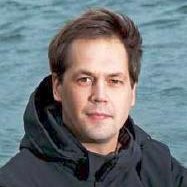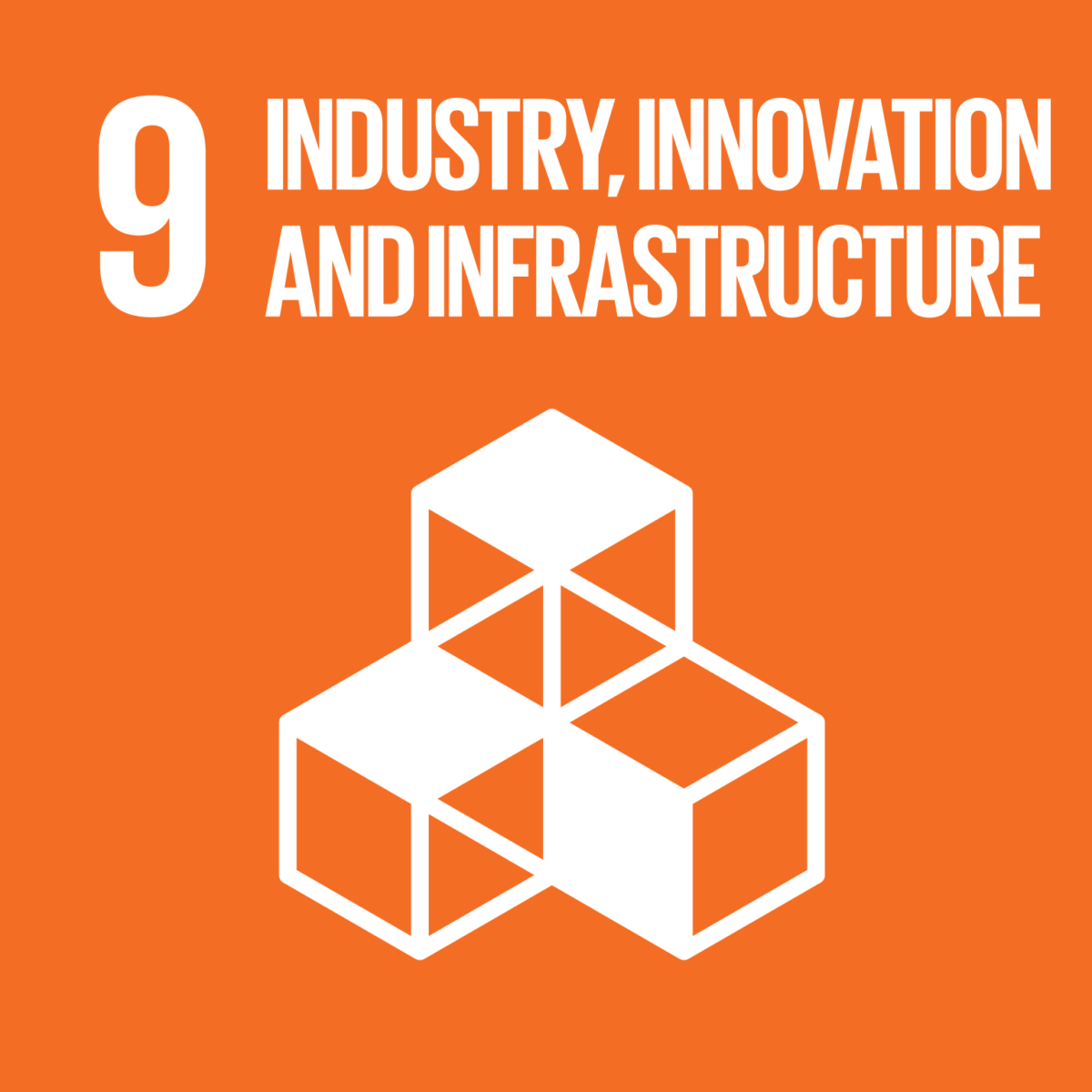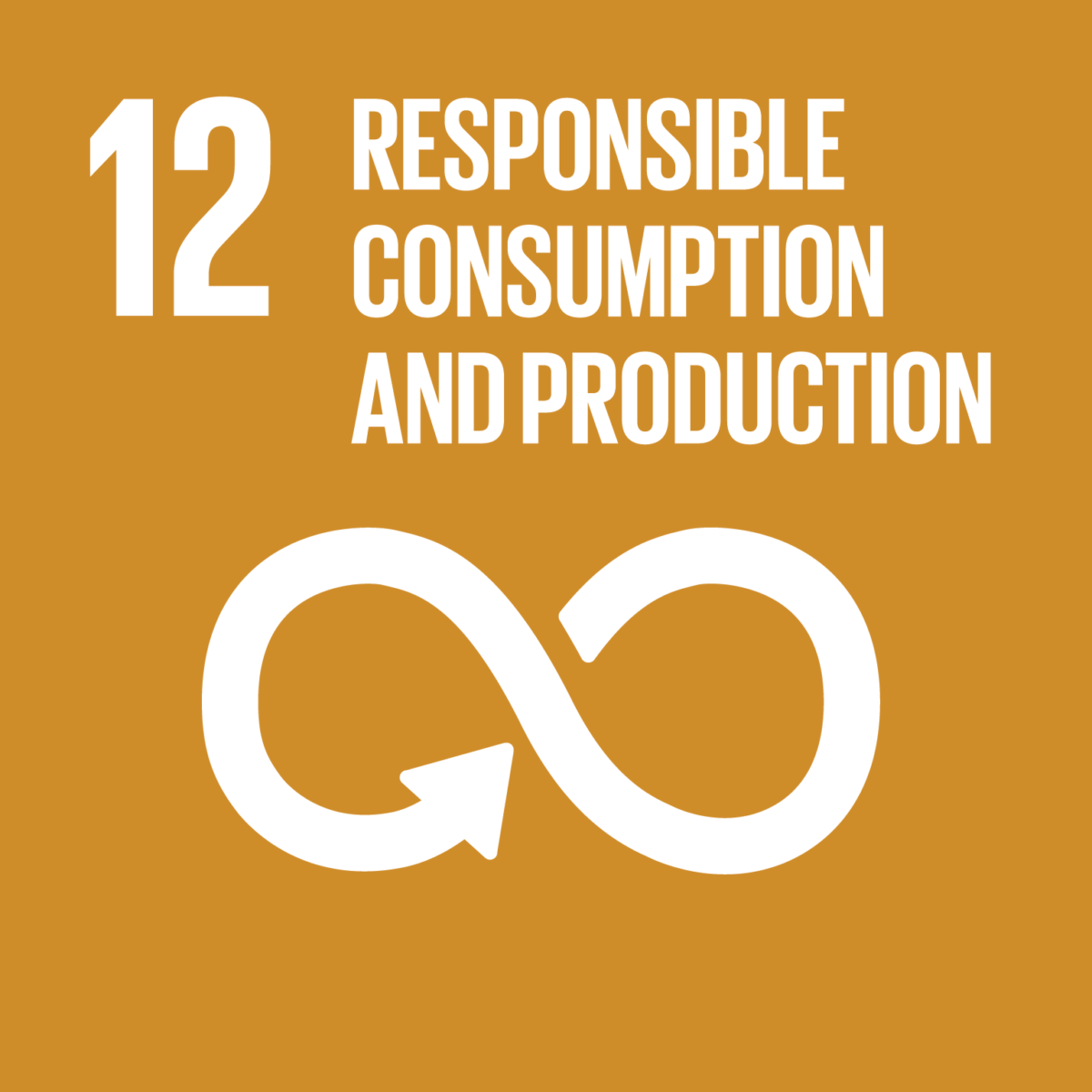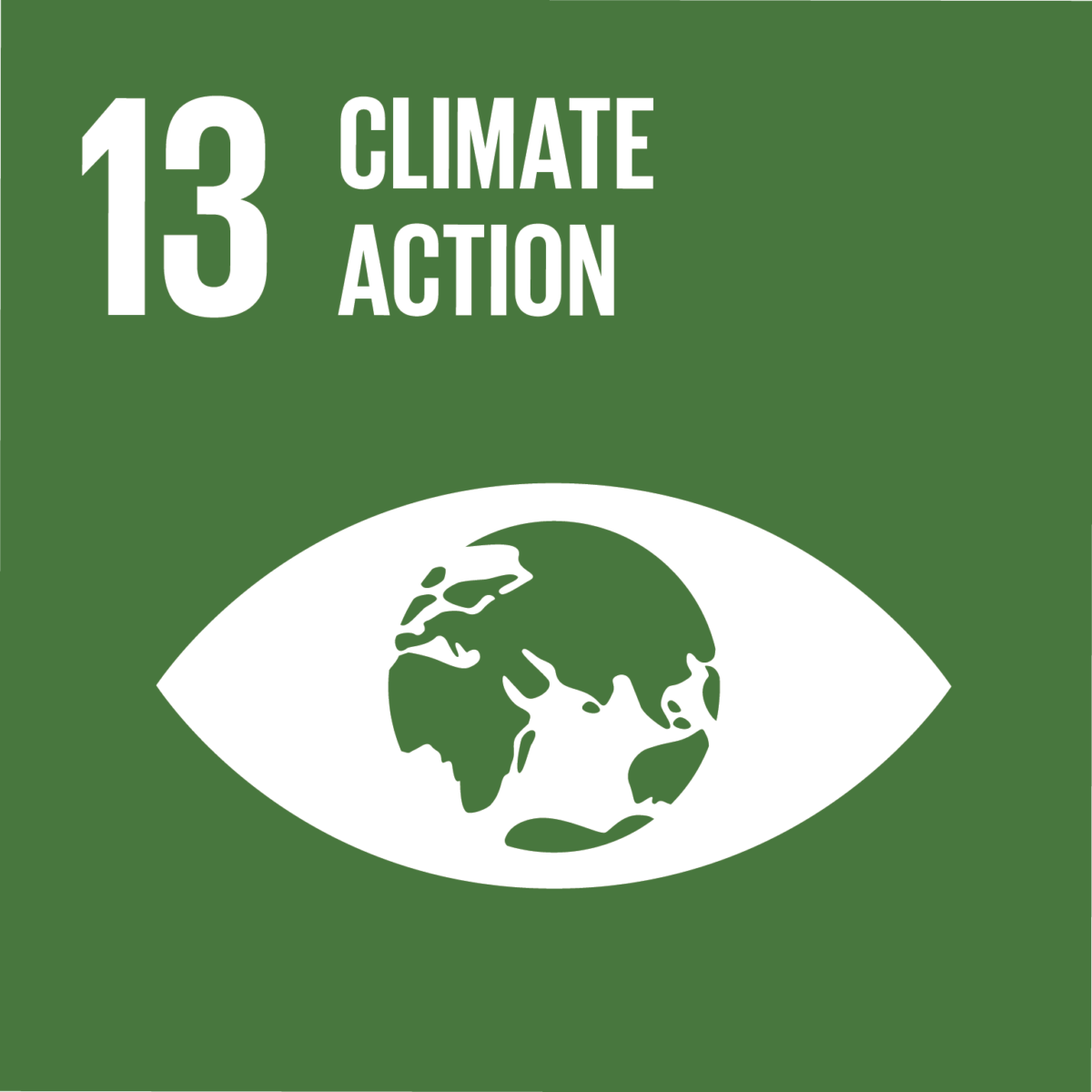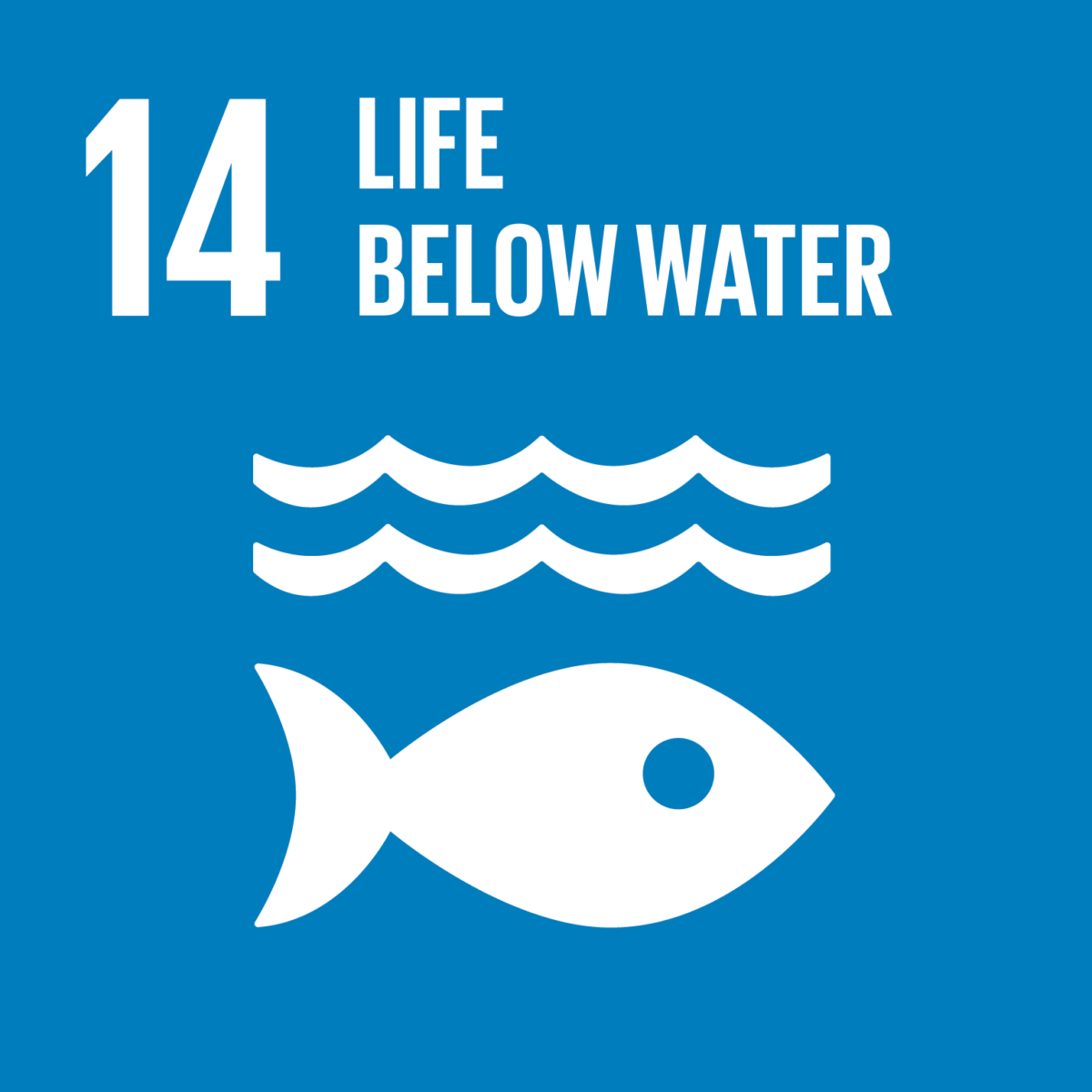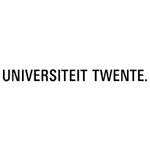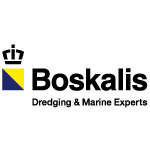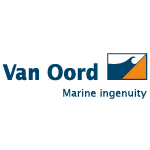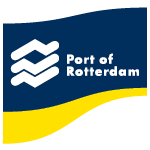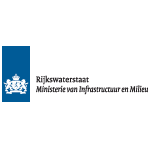Deep sand extraction and ecosystem-based landscaping
In the Netherlands, the demand for marine sand is still increasing. In 2015, a total volume of 26 million m3 of sand was extracted from the Dutch Continental Shelf. Due to the expected sea level rise, the demand for sand to maintain the Dutch coast with nourishments may increase from 12 million m3 to 40 – 85 million m3. Sand extraction impacts the ecology of the surface area. Therefore ecosystem-based design rules are needed to optimise the balance between impacted surface area, sand yield, costs and ecological effects are developed.
Traditionally, dredging operators leave behind a relatively flat seabed (Fig. 2, right panel). However, a flat seabed in general does not harbour a large biodiversity. Therefore, it was decided to test the hypothesis that local seabed landscaping of sand ridges would help to accelerate the process of recolonization and promote higher biodiversity (Fig. 2, left panel).
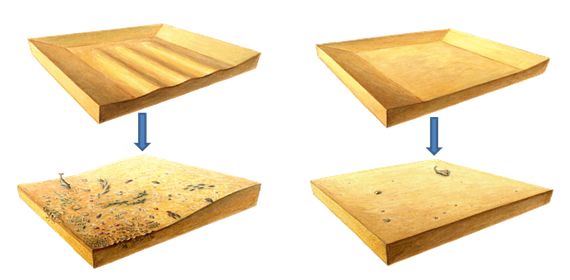
On the Dutch Continental Shelf, sand extraction takes place in areas with water depths over 20 m (Fig. 1). Until recently, extraction depths were restricted to 2 m below the seabed. In 2000, possibilities of extraction depths larger than 2 m below the seabed were explored. It became clear that in water depths of less than 40 m, the chance of reduced seawater oxygen content is rather small and that re-establishment of organisms on the seabed is possible. Currently larger extraction depths are allowed, for the development of harbour enlargement Maasvlakte 2 of the Port of Rotterdam, 220 million m3 of sand was extracted (Fig. 1, no. 3). Extraction depths up to 20 m below the seabed were employed mainly to decrease impacted surface area.
Goal
For the Building with Nature programme, the question was how to accelerate recolonization and promote productivity and biodiversity of deep sand extraction sites such as the Maasvlakte 2 extraction site:
1. Investigate the short-term ecological effects of deep and large-scale sand extraction (BwN I);
2. Investigate the short-term ecological effects of ecological landscaping (BwN I);
3. To develop ecosystem-based design rules for future sand extraction sites (BwN I);
Approach
Based on stakeholder engagement with marine ecologists, morphologists, permitting authorities, port representatives and contractors, requirements and technical parameters needed for the design, construction and monitoring of the experiment were determined. This process created understanding and awareness which contributed to the acceptance of the innovation by all parties involved. Next, by creating the landscaped bedforms and monitoring the ecological development, the theory and design could be tested in a real-life situation, ensuring that the final Building with Nature design guidelines are realistic and technically feasible. The pilot experiment took place in the sand extraction site used for the development of the Port of Rotterdam enlargement ‘Maasvlakte 2. Between 2008 and 2012, 220 million m3 was extracted from a 20 m deep area south of the Euromaasgeul shipping lane. A large northern extraction site is separated by an exclusion area consisting of clay and a southern smaller extraction site. The pilot experiment involved selective dredging, leaving behind two sand ridges in the northern part of the sand extraction site. These artificially landscaped sand ridges are about 700 metres long and 100 metres wide with crests of 10 metres high. The first sand ridge (Fig. 4, left panel) was created in 2010, in the eastern part of the sand extraction site and parallel to the tidal current. The second ridge was realised in 2011 in the southern part at an angle to the tidal current (Fig. 4 right panel).
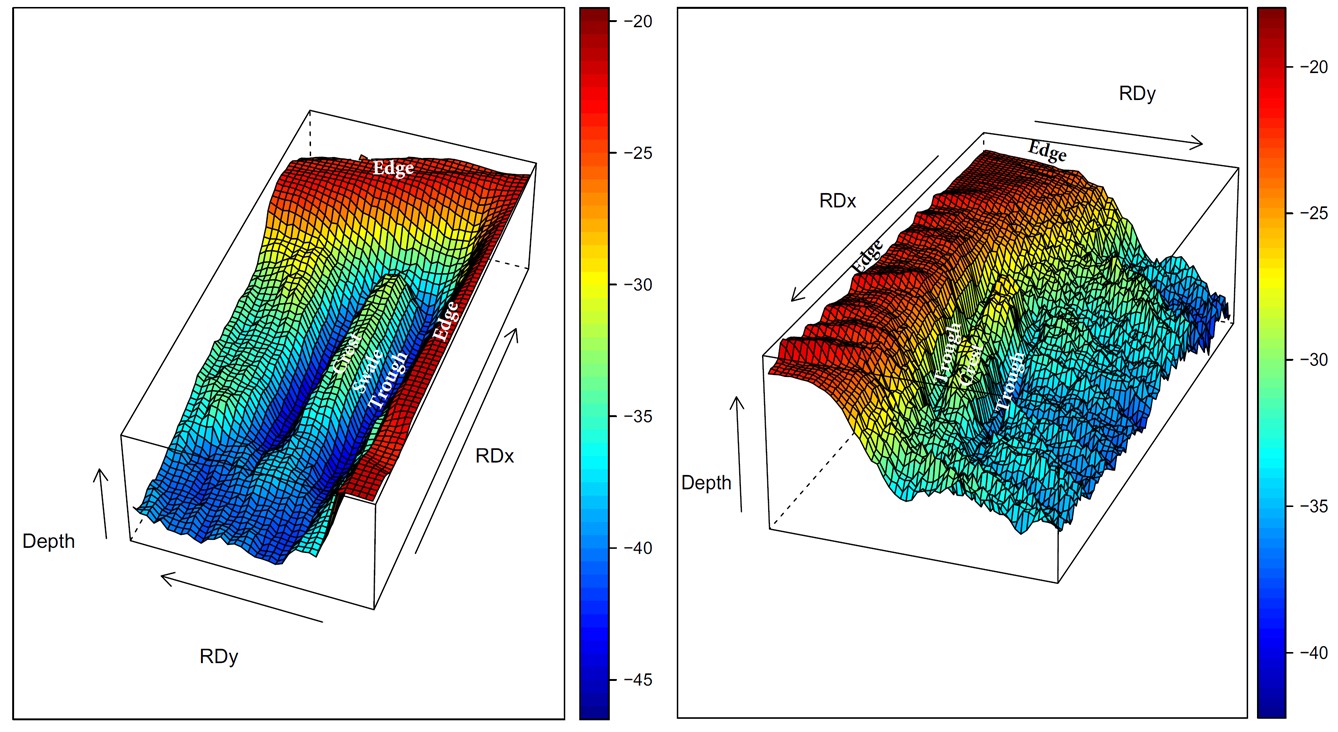
Figure 4: The pilot experiment with 2 ecosystem-based sand ridges, left panel: one parallel to the tidal current and right panel: one at an angle to the tidal current (photo: Maarten de Jong).
Monitoring approach
The recolonization of organisms on the seabed and the occurrence of bottom fish in the sand extraction site were monitored each spring from 2010 to 2012 using a wide array of equipment (Fig. 5). For sampling infauna, organisms living in the sediment, a box corer was used. Sediment samples were also collected from the box core samples. For epifauna, organisms living on the sediment, a towed bottom dredge was used. A commercially used beam-trawl was used to sample bottom fish. Multibeam data was gathered by the contractor PUMA (Joint Venture of Boskalis and Van Oord). The monitoring campaign was aligned with the campaign of the Port of Rotterdam (PoR) to maximise the amount of survey data.
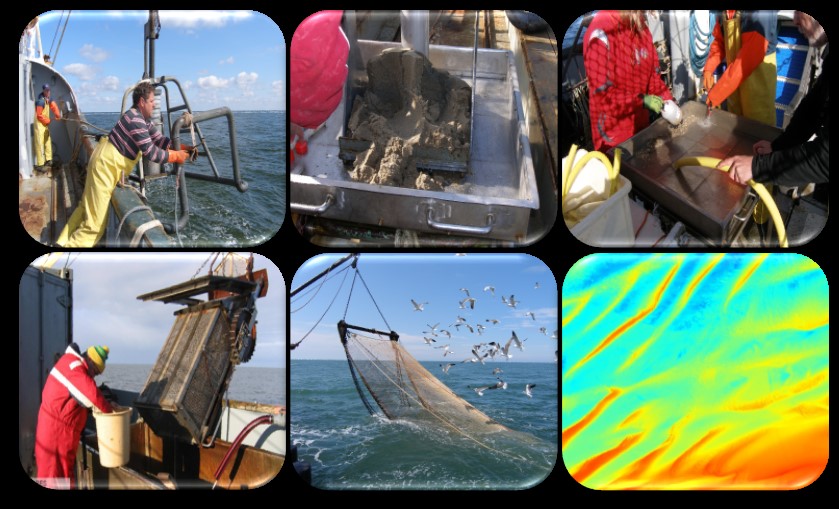
Figure 5: Infauna sampling (box corer), sediment sampling from box core, infauna sample handling, epifauna sampling (bottom sledge), demersal fish survey (4,5 m wide commercial beam trawl with the GO-29 “Jan Maria”), and multibeam surveys (photos: Maarten de Jong).
Biomass of organisms increased 10- to 20-fold
Summary of results
Based on data before the sand extraction and construction of Maasvlakte 2 (2006 and 2008), the distribution of organisms living in and on the seabed is strongly correlated with sediment characteristics and bed shear stress. Bed shear stress is the force per seabed surface area exerted by flowing water and determines sediment erosion/sedimentation patterns, seabed sediment composition and species composition and biomass of organisms living on the seabed. Five assemblages of organisms living in and on the seabed were present in the area in front of the Port of Rotterdam (de Jong et al. 2015a). 1 to 2 year after the cessation of sand extraction for Maasvlakte 2, biomass of organisms living in and on the seabed and bottom fish increased 10- to 20-fold compared to the reference area (de Jong et al. 2014 and 2015b). Species composition changed significantly and was dominated by white furrow shell (Abra alba). Bottom fish species also changed significantly. Plaice (Pleuronectes platessa) became the most dominant species whereas dab (Limanda limanda) is the most dominant bottom fish species in the refence area (de Jong et al. 2014). The recolonization of organisms living in and on the seabed of the sand extraction site is strongly correlated with sediment characteristics and decreased bed shear stress. Due to the decrease in bed shear stress and the sand extraction activities, fine sediment and organic matter settled on the seabed (de Jong et al. 2015b). Based on the ecological data and calculated bed shear stress values, ecosystem-based design rules are developed which can help minimise the impacted surface area, costs, CO2 emissions and maximise the sand yield of sand extraction project. Moreover, ecological effects effects can be calculated beforehand.
Deliverables
The Building with Nature program has generalized the experiences and results of the seabed landscaping experiment within the Maasvlakte 2 project, and has developed:
1. Scientific output of the results;
2. Practical guidelines on landscaped sand extraction sites;
3. Numerical models to predict the behaviour of water flow in the Maasvlakte 2 sand extraction site;
4. Lessons learned regarding habitat development of seabed landscapes;
5. Advice on the important issue of governance, such as identifying and contacting relevant stakeholders and drawing up an inventory of relevant policies and legal issues
Building with Nature Design Guidelines
Scientific Output
- de Jong M. F., The ecological effects of deep sand extraction on the Dutch Continental Shelf, Implications for future sand extraction, (2016) PhD thesis Wageningen University, Wageningen, the Netherlands, ISBN: 978-94-6257-683-4
- de Jong, M.F.; Borsje B.W., Baptist, M.J.; van der Wal J.T, Lindeboom, H.J.; Hoekstra, P. (2016) Ecosystem-based design rules for marine sand extraction sites. Ecological Engineering, 87(C): 271u2013280
- de Jong, M.F.; Baptist, M.J.; Lindeboom, H.J.; Hoekstra, P. (2015b) Short-term impact of deep sand extraction and ecosystem-based landscaping on macrozoobenthos and sediment characteristics. Marine Pollution Bulletin, 97(1u20132):294u2013308.
- de Jong, M.F.; Baptist, M.J.; Lindeboom, H.J.; Hoekstra, P. (2015a) Relationships between macrozoobenthos and habitat characteristics in an intensively used area of the Dutch coastal zone. ICES Journal of Marine Science, 72(8): 2409u20132422.
- de Jong, M.F.; Baptist, M.J.; van Hal, R.; De Boois, I.; Lindeboom, H.J.; Hoekstra, P. (2014) Impact on demersal fish of a large-scale and deep sand extraction site with ecosystem-based landscaped sandbars. Estuarine Coastal and Shelf Science, 146:83u201394.
Other output (articles, presentations and posters)
- Rijks, D., de Jong, M., Baptist, M. J., Aarninkhof, S.G.J. (2014). Article u201cUtilizing the Full Potential of Dredging Works: Ecologically Enriched Extraction Sitesu201d. Terra et Aqua, 136: 5u201314.
- De Jong, M. (2016) Book review: Thesis The ecological effects of deep sand extraction on the Dutch Continental Shelf, Terra et Aqua, 143: 60.
- u201cWaterbouwdag 2016u201d, 10 November 2016, Rotterdam, the Netherlands, oral presentation u201cSand extraction of the future – Ecological design rules for sand extraction and ecological landscapingu201d.
- u201cNorth Sea Open Science Conference 2016u201d, 9 November 2016, Oostende Belgium, oral presentation u201dEcosystem-based design rules for future borrow pits on BCSu201d.
- Noordzeedagen 2016, 6 and 7 November 2016, Zuiderstrandtheater, Scheveningen, The Netherlands, poster presentation u201cThe ecological effects of deep sand extraction on the Dutch continental shelfu201d.
- The International Council for the Exploration of the Sea (ICES) Annual Science Conference 2016, Riga Latvia, oral presentation u201dEcosystem-based design rules for future borrow pitsu201d
- u2018The Sand Motor: Five years of Building with Natureu2019 Scheveningen & Kijkduin, The Netherlands, oral pitch presentation about the ecological effects of deep sand extraction during a technical discussion session u201cEcological opportunities in Sandy Strategiesu201d
- VLIZ (Vlaams Instituut voor de Zee) u201cYoung marine scientists dayu201d 2015, Bruges Belgium, oral presentation on u201dEcodynamic-design rules for future borrow pits on the BCSu201d.
- NCK days 2016, Brouwersdam, The Netherlands, oral/poster presentation u201cThe ecological effects of deep sand extraction on the Dutch continental shelfu201d.
- NCK days 2015, Schoorl, The Netherlands, oral presentation on u201dEcodynamic-design rules for future borrow pitsu201d.
- Emsagg (The European Marine Sand and Gravel Group) 2015, Delft The Netherlands, oral/poster presentation on u201dEcodynamic-design rules for future borrow pitsu201d
Sustainable Development Goals
Contact
